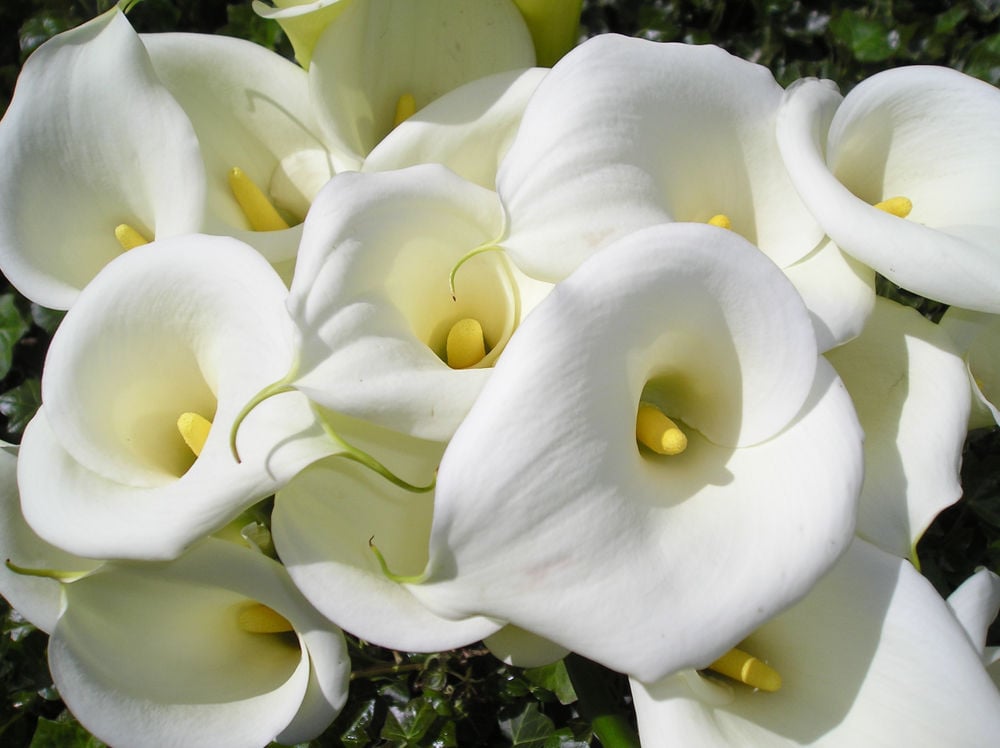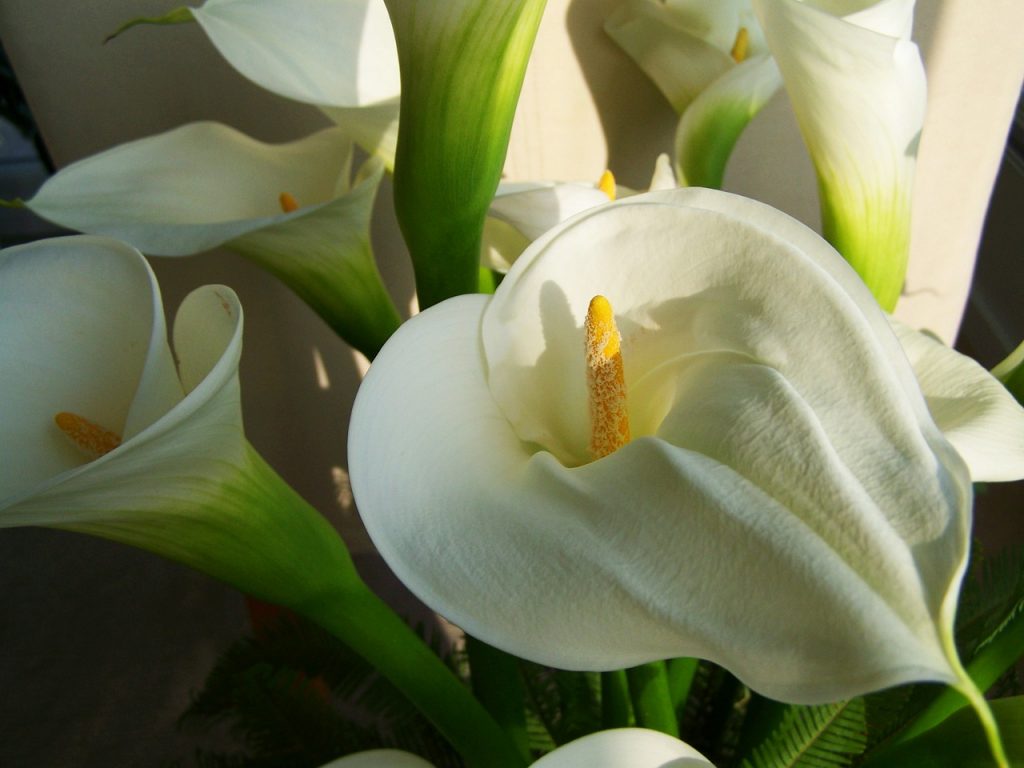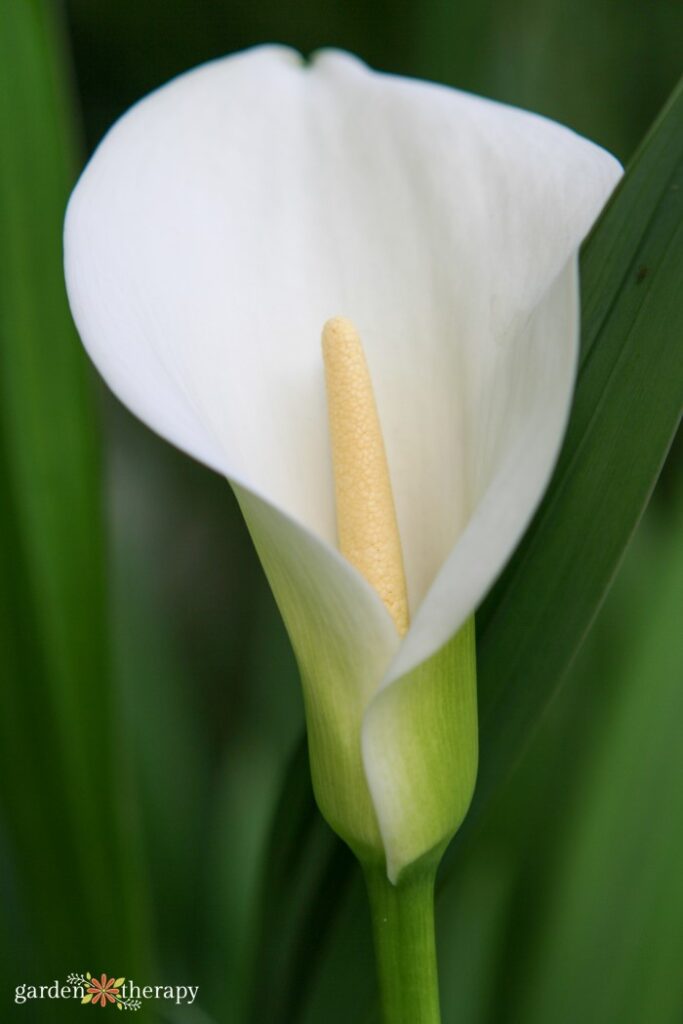Unlocking the Secrets of Successful Calla Lily Growth
Calla lilies are renowned for their elegant, trumpet-shaped blooms and sleek, dark green foliage. These stunning flowers have been a popular choice for gardens and floral arrangements for centuries, and their beauty is undeniable. However, growing calla lilies can be a challenging task, especially for novice gardeners. To successfully cultivate these lovely flowers, it’s essential to understand their specific growing requirements. In this comprehensive guide, we’ll delve into the world of calla lilies and provide a step-by-step approach on how to grow calla lilies, from selecting the right variety to enjoying their beautiful blooms.
Whether you’re a seasoned gardener or just starting to explore the world of horticulture, growing calla lilies can be a rewarding experience. With their unique characteristics and relatively low-maintenance care, calla lilies are an excellent choice for gardeners of all skill levels. By following the tips and advice outlined in this article, you’ll be well on your way to growing healthy, thriving calla lilies that will add a touch of elegance to your garden or indoor space.
So, how do you grow calla lilies? It all starts with understanding the basics of calla lily growth and development. In the following sections, we’ll explore the different types of calla lilies, discuss the importance of soil quality and composition, and provide a step-by-step guide on how to plant and care for these beautiful flowers.
Choosing the Right Variety: Selecting the Perfect Calla Lily for Your Garden
With over 20 different species of calla lilies, choosing the right variety can be a daunting task. However, by understanding the unique characteristics, growth habits, and blooming periods of each type, you can select the perfect calla lily for your garden. One of the most popular varieties is the Zantedeschia aethiopica, which is known for its elegant white blooms and dark green foliage. Another popular variety is the Zantedeschia jucunda, which produces bright yellow flowers and is often used in floral arrangements.
When selecting a calla lily variety, it’s essential to consider your specific climate and garden conditions. If you live in a cooler climate, you may want to choose a variety that is more tolerant of cooler temperatures, such as the Zantedeschia rehmannii. On the other hand, if you live in a warmer climate, you may want to choose a variety that is more heat-tolerant, such as the Zantedeschia elliottiana.
In addition to considering climate and temperature, you should also think about the level of maintenance you are willing to provide. Some calla lily varieties require more frequent watering and fertilization, while others are more low-maintenance. By choosing a variety that fits your lifestyle and gardening habits, you can ensure that your calla lilies thrive and provide beautiful blooms for years to come.
When learning how to grow calla lilies, it’s also important to consider the specific growing requirements of each variety. Some calla lilies prefer well-draining soil, while others prefer more moist conditions. By understanding the unique needs of your chosen variety, you can provide the best possible care and ensure optimal growth and blooming.
Preparing the Perfect Soil: Tips for Creating a Calla Lily-Friendly Environment
Soil quality and composition play a crucial role in the growth and development of calla lilies. To create a calla lily-friendly environment, it’s essential to understand the ideal pH range, nutrient requirements, and drainage needs of these plants. Calla lilies prefer well-draining soil with a slightly acidic to neutral pH, ranging from 6.0 to 7.0. Soil with poor drainage can lead to root rot and other problems, so it’s crucial to ensure that the soil drains properly.
In addition to pH and drainage, calla lilies also require specific nutrient requirements. They thrive in soil rich in organic matter, such as compost or well-rotted manure. A balanced fertilizer with a ratio of 10-10-10 (nitrogen-phosphorus-potassium) can provide the necessary nutrients for healthy growth and blooming. However, it’s essential to avoid over-fertilizing, as this can damage the roots and lead to other problems.
When preparing the soil for calla lilies, it’s also important to consider the type of soil you have. If your soil is heavy clay or sandy, you may need to amend it with organic matter or other soil conditioners to improve its structure and fertility. By creating a well-draining, fertile soil environment, you can provide your calla lilies with the best possible start for healthy growth and blooming.
When learning how to grow calla lilies, it’s also important to understand the importance of soil temperature. Calla lilies prefer soil temperatures between 65°F and 75°F (18°C and 24°C), which is ideal for root growth and development. By providing the right soil temperature, you can encourage healthy growth and blooming in your calla lilies.
Planting Calla Lilies: A Step-by-Step Guide
Planting calla lilies is a straightforward process that requires some basic knowledge and preparation. To ensure successful growth and blooming, it’s essential to plant calla lilies at the right time and in the right location. In most regions, the best time to plant calla lilies is in the spring or early summer, when the soil has warmed up and the risk of frost has passed.
Before planting, choose a location that receives partial shade to full sun, depending on the variety of calla lily you are growing. Calla lilies prefer well-draining soil, so make sure the area is not prone to waterlogging. If your soil is heavy clay or sandy, amend it with organic matter or other soil conditioners to improve its structure and fertility.
To plant calla lilies, start by digging a hole that is about 2-3 times deeper than the height of the rhizome. Place the rhizome in the hole, making sure the eyes (small buds on the rhizome) are facing upwards. Fill the hole with soil, gently firming it around the rhizome to prevent air pockets. Water the soil well to settle it around the rhizome.
Space calla lilies about 12-18 inches apart, depending on the variety. This will give them enough room to grow and bloom without becoming too crowded. Water the soil regularly during the first few weeks after planting, keeping it consistently moist but not waterlogged.
When learning how to grow calla lilies, it’s also important to understand how to handle the rhizomes. Calla lily rhizomes are sensitive to damage, so handle them carefully when planting. Avoid exposing the rhizomes to direct sunlight or extreme temperatures, as this can cause damage or rot.
Providing Optimal Care: Watering, Fertilizing, and Pruning Calla Lilies
Providing optimal care is crucial for healthy growth and blooming of calla lilies. One of the most important aspects of care is watering. Calla lilies prefer well-draining soil and should be watered regularly, but not excessively. Overwatering can lead to root rot and other problems, so it’s essential to check the soil moisture before watering.
Fertilization is also essential for calla lily growth and blooming. A balanced fertilizer with a ratio of 10-10-10 (nitrogen-phosphorus-potassium) can provide the necessary nutrients for healthy growth and blooming. However, it’s essential to avoid over-fertilizing, as this can damage the roots and lead to other problems.
Pruning is another important aspect of calla lily care. Calla lilies should be pruned regularly to maintain their shape and promote healthy growth. Remove any dead or dying leaves or flowers, and cut back the stems to about 6 inches from the ground after blooming.
When learning how to grow calla lilies, it’s also important to understand the importance of repotting. Calla lilies typically need to be repotted every 2-3 years, as their rhizomes can become pot-bound. Choose a pot that is slightly larger than the previous one, and use a well-draining potting mix to prevent waterlogging.
By providing optimal care, including watering, fertilizing, and pruning, you can encourage healthy growth and blooming in your calla lilies. Remember to also repot your calla lilies regularly to prevent pot-bound rhizomes and promote healthy growth.
Common Challenges and Solutions: Troubleshooting Calla Lily Problems
Despite their elegant appearance, calla lilies can be prone to various problems, including pests, diseases, and environmental stressors. To ensure healthy growth and blooming, it’s essential to identify and address these issues promptly. One common problem is root rot, which can occur due to overwatering or poor drainage. To prevent root rot, make sure the soil drains well and avoid watering the plant excessively.
Another common issue is pests, such as aphids, whiteflies, and spider mites. These pests can cause damage to the leaves and flowers, and can also transmit diseases. To control pests, use insecticidal soap or neem oil, and make sure to isolate infected plants to prevent the spread of disease.
Diseases, such as leaf spot and crown rot, can also affect calla lilies. To prevent diseases, make sure the plant has good air circulation, and avoid watering the leaves or crown. If you notice any signs of disease, treat the plant with a fungicide and remove any infected leaves or flowers.
Environmental stressors, such as extreme temperatures, drought, and wind, can also affect calla lilies. To protect the plant from extreme temperatures, provide shade or use a frost blanket. To prevent drought, water the plant regularly, but avoid overwatering. To protect the plant from wind, provide support or use a windbreak.
By identifying and addressing common problems, you can ensure healthy growth and blooming in your calla lilies. Remember to monitor your plants regularly, and take action promptly if you notice any signs of pests, diseases, or environmental stressors.
Encouraging Blooming: Tips for Stimulating Calla Lily Flower Production
Calla lilies are known for their elegant and exotic blooms, but they can be finicky when it comes to producing flowers. To encourage blooming, it’s essential to provide the right conditions and care. One of the most important factors is temperature. Calla lilies typically bloom in the spring and summer months when the temperature is between 65°F and 75°F (18°C and 24°C).
Light control is also crucial for stimulating flower production. Calla lilies require bright, indirect light to produce flowers. Placing them in a sunny window or under grow lights can help stimulate blooming. However, avoid direct sunlight, as it can cause the leaves to become scorched and the flowers to become discolored.
Another technique for stimulating flower production is to provide a period of cooler temperatures. Calla lilies typically require a period of 30 to 60 days of cooler temperatures (around 50°F to 60°F or 10°C to 15°C) to induce flowering. This can be achieved by placing the plant in a cooler location or by using a cooling mat.
Fertilization is also important for stimulating flower production. Use a balanced fertilizer that is high in phosphorus (such as 10-20-10) to promote blooming. Avoid over-fertilizing, as this can cause the plant to produce more foliage than flowers.
By providing the right conditions and care, you can encourage your calla lilies to produce beautiful and exotic blooms. Remember to monitor your plants regularly and adjust their care accordingly to ensure optimal blooming.
Enjoying Your Blooming Calla Lilies: Tips for Long-Lasting Flowers
Once your calla lilies have bloomed, you can enjoy their beautiful flowers for several weeks. To extend the blooming period, make sure to provide the right conditions and care. Keep the plant in a cool, dry location, away from direct sunlight and heat. This will help to prolong the life of the flowers and prevent them from becoming discolored.
To care for the flowers, avoid touching or handling them excessively, as this can cause damage and shorten their lifespan. Instead, gently inspect the flowers daily to remove any dead or dying blooms. This will help to maintain the appearance of the plant and encourage new flowers to form.
Calla lilies can also be used in arrangements and decorations to add a touch of elegance and sophistication. To use calla lilies in arrangements, simply cut the stems at an angle and place them in a vase or container filled with water. You can also add other flowers, foliage, and decorative elements to create a unique and beautiful arrangement.
When using calla lilies in decorations, consider pairing them with other flowers and elements that complement their elegant and exotic appearance. For example, you can pair calla lilies with roses, peonies, or hydrangeas to create a stunning and sophisticated arrangement.
By following these tips, you can enjoy your blooming calla lilies for several weeks and use them to add a touch of elegance and sophistication to your home or garden. Remember to provide the right conditions and care to extend the blooming period and keep the flowers looking their best.








